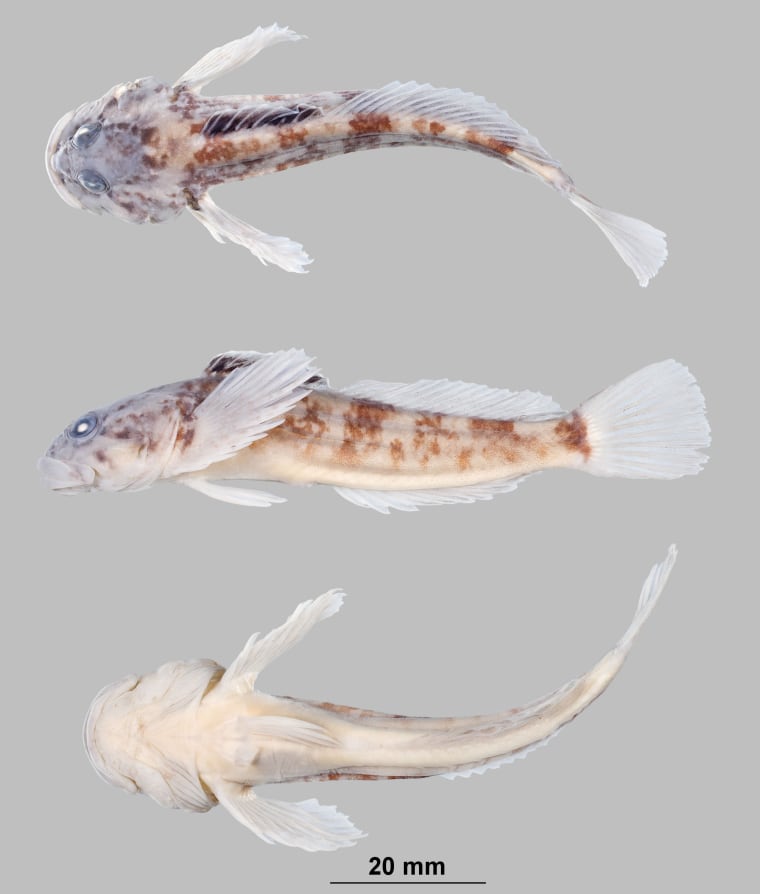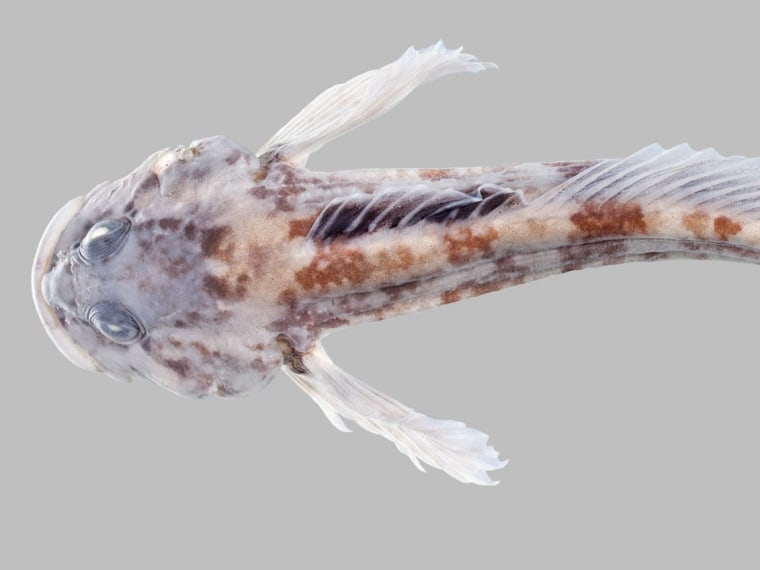
SALMON, Idaho — A tiny fish characterized by a disproportionately large head and previously unknown to scientists has been found in mountain rivers of Idaho and Montana, in what biologists said on Thursday marked a rare discovery.
The new aquatic species is a type of freshwater sculpin, a class of fish that dwell at the bottom of cold, swift-flowing streams throughout North America and are known for their oversized head and shoulder structure.
"The discovery of a new fish is something I never thought would happen in my career, because it's very rare in the United States," said Michael Young, co-author of a scientific description of the find that has been published in the latest edition of the peer-reviewed journal Zootaxa.
Say hello to the cedar sculpin
Scientists with the U.S. Forest Service Rocky Mountain Research Station in Montana first encountered the new species while conducting a genetic inventory of fish found in the upper Columbia River basin, said Young, also an agency fisheries biologist.
At first, researchers were not sure they had stumbled on a never-before-seen fish.
But genetic testing and examination of key physical differences proved that the specimens in question, found in the Coeur d'Alene and St. Joe rivers in northern Idaho and in a stretch of the Clark Fork River in neighboring Montana, were distinct from known varieties of the bottom-feeding fishes.
The fish has been named the cedar sculpin, after Western red cedars that line streams in the Idaho panhandle where it was first discovered.
Cedar sculpin differ from more common species by variations in spiny structures that sprout from their heads, which may protect them from predators, and the configuration of a line of tiny pores along each side of the body which fish use to detect movements and compounds in their environment, biologists said.
Food for sport fish
The big-headed fish, which eat aquatic insects and are typically no larger than 6 inches (15 centimeters), are known for their ill-favored looks, but Young said the fish's merits are more than fin deep.
Sculpin are the preferred prey of prized sport fish like cutthroat trout and rare fish like bull trout, and anglers for nearly a century have lured trout with a fly-fishing pattern that imitates sculpin.
Don Johnson, professor emeritus in fishery biology at Idaho State University, said the discovery of a new species shows Mother Nature still has a few tricks up her sleeve.
"It tells you how much we still don't know about our environment and the interactions of its diverse components," he said.
In addition to Young, the authors of "Cottus Schitsuumsh, a New Species of Sculpin (Scorpaeniformes: Cottidae) in the Columbia River Basin, Idaho-Montana, USA" include Michael Lemoine, Kevin McKelvey, Lisa Eby, Kristine Pilgrim and Michael Schwartz.
